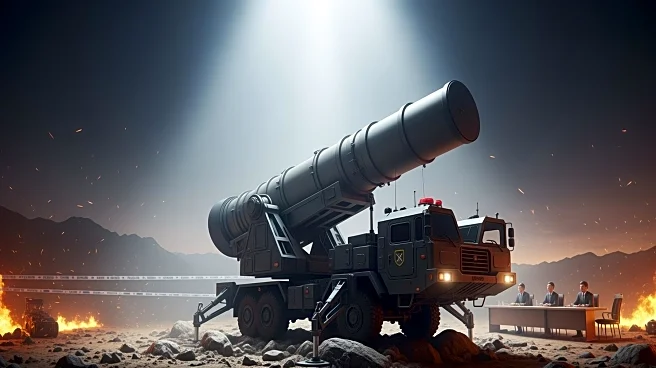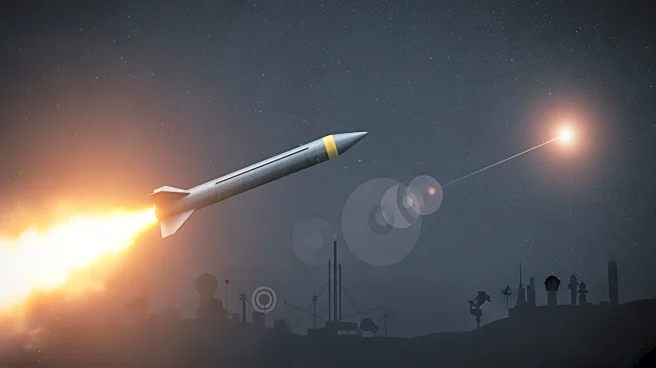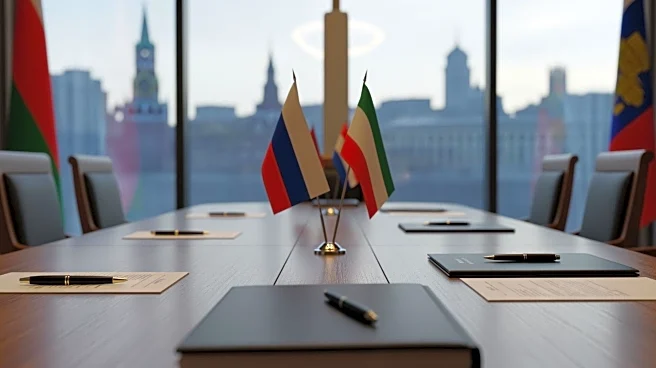What's Happening?
Hezbollah is actively rebuilding its military capabilities following the 2023-2024 conflict with Israel, which saw significant losses for the group. The organization is focusing on developing a new arsenal
that includes primitive yet effective weapons such as the Burkan rocket and kamikaze drones. These weapons are cost-effective, require minimal infrastructure, and are harder to intercept, posing a significant challenge to Israel's defense systems. Despite Israel's technological superiority and successful interception of many of Hezbollah's advanced missiles during the conflict, the simplicity and low cost of these new weapons make them a formidable threat. Hezbollah's strategy now includes a mix of 'smart' missiles and 'dumb' rockets, which could bypass Israel's defenses more effectively.
Why It's Important?
The development of simpler, cost-effective weapons by Hezbollah represents a strategic shift that could have significant implications for regional security. These weapons, while less sophisticated, are harder to detect and intercept, potentially overwhelming Israel's defense systems. This shift could lead to increased tensions and instability in the region, as Hezbollah's ability to inflict damage with minimal resources grows. The situation underscores the ongoing arms race in the Middle East, where non-state actors like Hezbollah are adapting to technological advancements by focusing on low-cost, high-impact weaponry. This development could influence military strategies and defense spending in the region, as countries may need to invest in new technologies to counter these emerging threats.
What's Next?
Hezbollah is likely to continue its efforts to rebuild and expand its arsenal, focusing on the production of low-cost drones and other simple weapons. Israel, in response, may need to enhance its intelligence and defense capabilities to detect and neutralize these threats effectively. The ongoing arms buildup could lead to further military engagements between Hezbollah and Israel, with potential repercussions for the broader Middle East. International stakeholders, including the United States and other Western nations, may need to reassess their strategies and support for regional allies to address the evolving security landscape.
Beyond the Headlines
The use of primitive weapons by Hezbollah highlights a broader trend in modern warfare, where non-state actors leverage cost-effective technologies to challenge more advanced military forces. This approach raises ethical and legal questions about the proliferation of such weapons and their impact on civilian populations. The situation also reflects the complexities of asymmetric warfare, where traditional military advantages are undermined by unconventional tactics. As these dynamics continue to evolve, they may influence global military doctrines and the development of new defense technologies.











